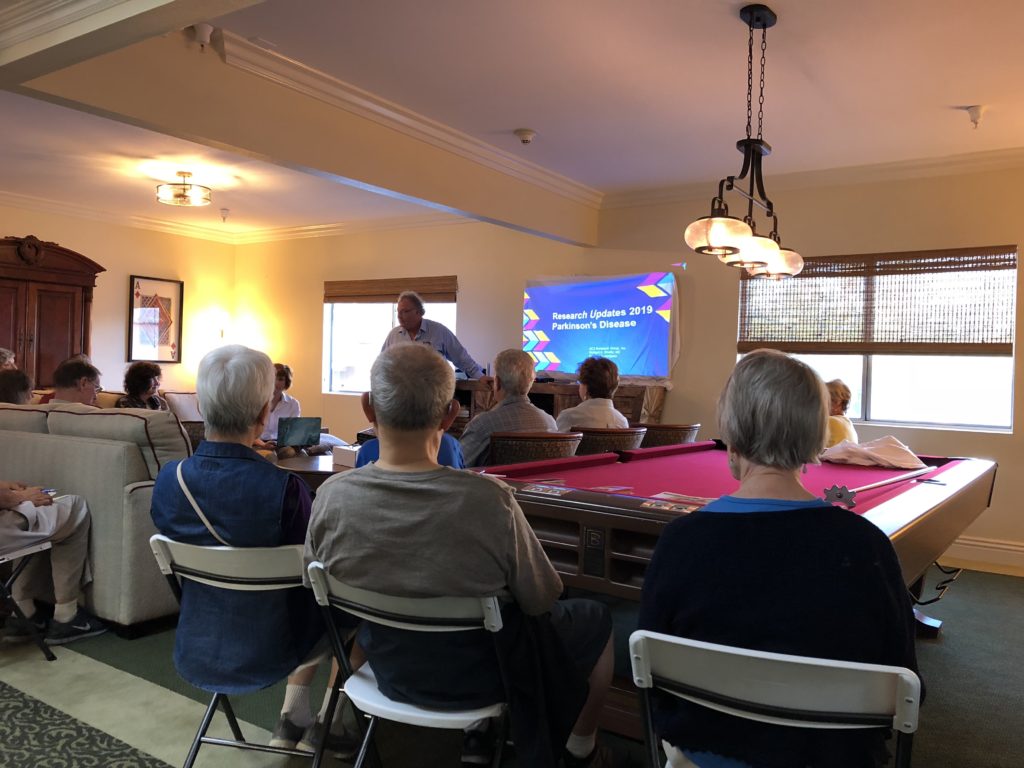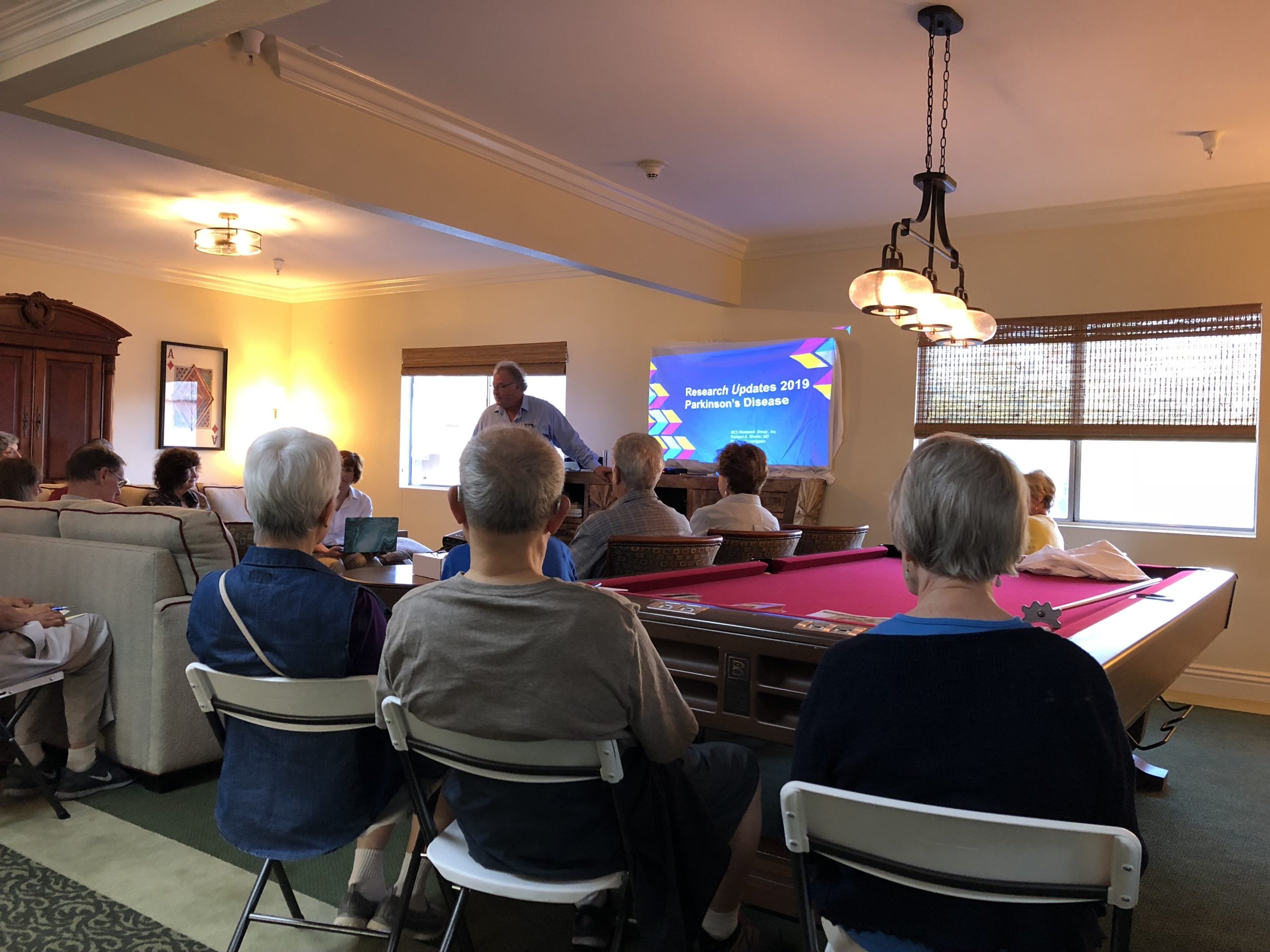Among the top priorities of New Wave Home Care is to continually expand our knowledge to better serve our clients in the day-to-day challenges they face. Toward that end, we recently attended a symposium on Parkinson’s disease held in Pasadena.

The presentation included the history of Parkinson’s, which dates back to an 1817 essay by British apothecary, James Parkinson. What entered the world’s consciousness as the first clear medical treatise on “shaking palsy” became known as Parkinson’s disease in 1865.
In Parkinson’s disease, the brain doesn’t produce dopamine, a neurotransmitter that passes signals that are involved in controlled movements, such as writing or eating. While there is still no cure, medical research has come a long way in two centuries, which brings us to the presentation at our meeting in Pasadena. Among the topics covered were some of the latest in treatments for Parkinson’s that are currently in the pipeline.
One such medication we were made aware of for clinical use is safinamide, the first new drug in more than 15 years to be approved by the FDA for treating Parkinson’s. It’s an add-on treatment used in combination with levodopa, a dopamine replacement agent. As Parkinson’s progresses, levodopa becomes less effective, causing symptoms to return before it’s time for the next dosage. Safinamide prevents the breakdown of dopamine, which increases the long-term efficacy of levodopa.
Another approach to prolonging the efficacy of levodopa is VY-AADC02 gene therapy by Voyager Therapeutics, currently in phase two of clinical trials. As Parkinson’s progresses, patients produce less of an enzyme called 1-amino acid decarboxylase (AADC), which converts levodopa to dopamine. Without enough AADC, Parkinson’s symptoms return prematurely as levodopa treatments lose their efficacy over the long term. Scientists theorize that by introducing the AADC enzyme into the putamen region of the brain, its neurons can produce their own AADC enzyme and convert levodopa into dopamine, which in turn prolongs the usefulness of levodopa and reduce symptoms.
We also learned about microglia, a population of cells whose primary function is to act as immune cells within the brain. When they sense trouble, microglia determine whether the affected cells need to be nurtured back to health or left to die out. Researchers have demonstrated that microglia are critically involved in the cell-to-cell transfer of a protein known as alpha-synuclein. It’s theorized that when alpha-synuclein begins to cluster within the cells during the transfer process, the progressive nature of Parkinson’s manifests itself. Medical researchers have concluded that drugs regulating microglia and neuro-inflammation could represent a future avenue for limiting the progression of Parkinson’s by reducing the spread of alpha-synuclein.
While a cure remains out of reach, treatments and discoveries such as the few highlights we mentioned above bring one closer to our grasp every day. Of course, until that day comes, New Wave Home Care’s approach remains the same: Patience backed by compassion (or is it the other way around?). Either way, the net effect for our clients is the same; providing the best home care for our community.






